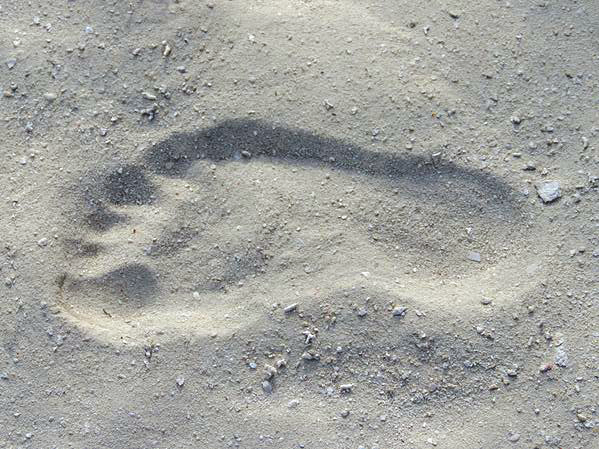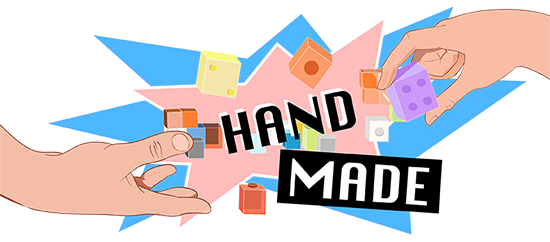
Hand Made
Before you begin
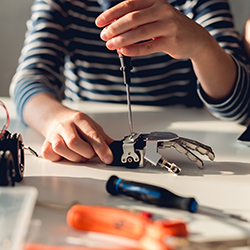 This experiment will test the dexterity and flexibility of our hands.
This experiment will test the dexterity and flexibility of our hands.
Our fingers let us do many things easily and precisely. We can get food, make tools, and play with toys. When you put on the mitts and try to build a structure, you will get a sense of how hard it would be to do things that we do every day if our hands were shaped differently.
The human body has evolved through time in response to our environment. Before human hands evolved to their modern form, our hominin ancestors began walking upright. This left their arms and hands free to carry things and make tools. Tools provided our ancestors with a great advantage, and so human hands—and brains—continued to evolve to allow tool use. The need for us to use tools is the reason our hands are so flexible.
What you will need
- Pair of oven mitts or mittens
- Toy building bricks in large and regular sizes (Lego® and Duplo® or similar)
- Experiment packet [PDF]
Procedure
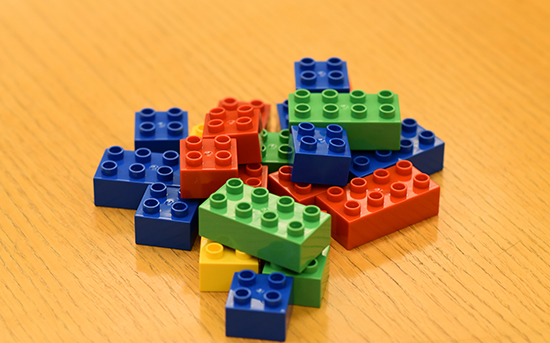
1. Put on the oven mitts or mittens, making sure that you cannot touch your thumb to your individual fingers.
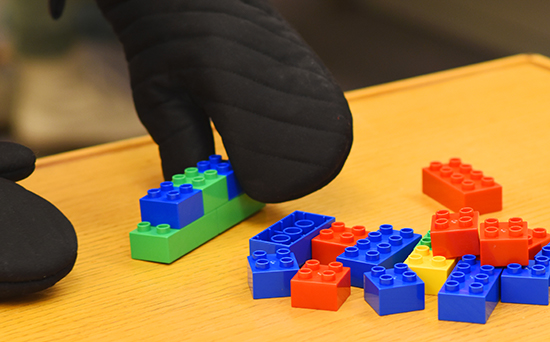
2. Take the blocks and attempt to build the Lego structure in the pictures below.
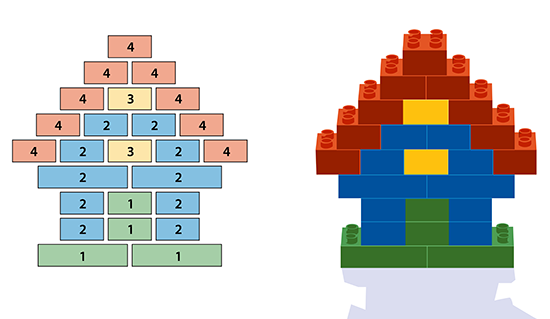
3. Now, take off your mitts and try to build the structure again.
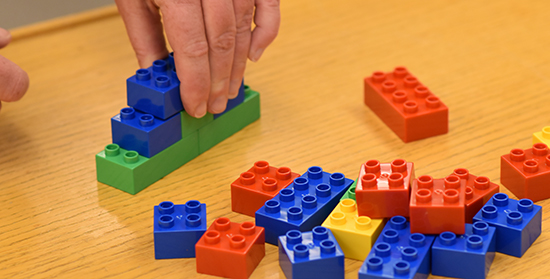
Learn more
From this experiment, we learned that our hands are very flexible—when not wearing mitts. The flexibility of our hands allows us to accomplish tasks that other animals can’t, like building this structure.
Many other animals don’t have hands like we do. They might have paws, hooves, or fins, which are better suited to the places they live and the things they do to survive. For example, dog paws and horse hooves are adapted for running quickly. They’re much faster than we are, but they can’t do delicate work like we can.
Our closest living relatives, chimpanzees, have hands and feet that are similar to ours, but with some key differences. Chimps use their hands when they walk on the ground, which is called knuckle walking. So, chimps have thicker finger bones and stiffer wrists to support their weight. They spend a lot time in trees, so they also have opposable toes (like thumbs) on their feet that let them easily climb and hold onto branches.
Bibliographic Details
- Article: Hand Made
- Author(s): Amy Peterson
- Publisher: Arizona State University Institute of Human Origins Ask An Anthropologist
- Site name: ASU - Ask An Anthropologist
- Date published:
- Date modified:
- Date accessed: January 16, 2026
- Link: https://askananthropologist.asu.edu/experiments/hand-made
APA Style
Amy Peterson. (). Hand Made. Retrieved 2026, Jan 16, from {{ view_node }}
American Psychological Association, 6th ed., 2nd printing, 2009.
For more info, see the
APA citation guide.
Chicago Manual of Style
Amy Peterson. "Hand Made." ASU - Ask An Anthropologist. Published . Last modified . https://askananthropologist.asu.edu/experiments/hand-made.
Chicago Manual of Style, 17th ed., 2017.
For more info, see the
Chicago Manual citation guide.
MLA Style
Amy Peterson. Hand Made. ASU - Ask An Anthropologist. , {{ view_node }}. Accessed January 16, 2026.
Modern Language Association, 8th ed., 2016.
For more info, see the
MLA citation guide.
Experiment Packet
Be Part of
Ask An Anthropologist
By volunteering, or simply sending us feedback on the site. Scientists, teachers, writers, illustrators, and translators are all important to the program. If you are interested in helping with the website we have a volunteers page to get the process started.

